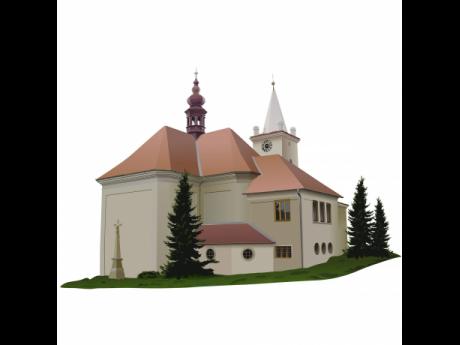The Moravians in Jamaica 1754-1834 Part 2
Three Moravian missionaries arrived in Black River on December 7, 1754, to give religious instructions to the enslaved Africans on the plantations of absentee owners, brothers William Foster and Joseph Foster-Barham, in western Jamaica.
But, if the missionaries had harboured any thought of an idyllic personal life in the tropics, and the unencumbered saving of souls, they were dead wrong. Theirs and the sojourns of those who came after them were fraught with numerous challenges, and death was to put an end to the mission of many up to 1834.
The missionaries came with the understanding that they were to be taken care of financially by the overseers of the estates and their functionaries, but they were immediately resented by the those gatekeepers, who saw them as potential meddlers in the running of the plantations. The profitability of the estates, and not the salvation of the enslaved, was the objective of the managers.
The missionaries were first stationed at Bogue, St Elizabeth, one of the estates, and were eventually given 700 acres of language a few miles away, near Santa Cruz. They named the mission station New Carmel, which was later referred to as Old Carmel.
The overseers did everything to frustrate the missionaries. They wanted to reprimand the enslaved, who, they claimed, were lazy and pretending to be ill. Thus, the Moravians were caught between the hands that fed them and the spiritual and physical well-being of the enslaved.
They got no salary from abroad and little support from the overseers. At Old Carmel, they were forced to cultivate ground provisions and rear cattle. This, of course, required great manual labour. And for this, they turned to the very people whose lot they had come to ameliorate, the enslaved Africans, 30 to 40 of whom they owned, when Old Carmel was an estate.
SYSTEM OF OPPRESSORS
The Africans' attitude towards the Moravians from day one was nonchalant. They regarded these Christians as part of the system of oppressors. It was difficult to convince some of them to attend services, and the time made availability for intervention in the evenings was either too short or inconvenient. Moreover, many Africans were secretly practising their own religions, which kept them away from the mission services.
The baptism and conversion of the enslaved went slower than expected, despite periods of surges. The missionaries worked under great pressure of operating businesses to survive and ministering to the enslaved.
It was especially problematic at Old Carmel, where much time was devoted to running the estate, which was closed in 1823. By that time, it had become the final resting place for many missionaries and some of their relatives.
The area in St Elizabeth where the missions were located were generally wetlands, hot, humid, and abounding with disease-carrying insects. Much of Old Carmel was swampland, where miasma wafted, making people sick. Some returned because of ill-health, but dysentery, yellow fever and malaria had put many of them into graves far from where they had come.
At Mesopotamia in Westmoreland, one of the earliest stations, things were grim, and it was considered one of the failed missions at the time. Deaths, illnesses, poor attendance, the nonchalance of the enslaved, and missionaries' refusal to be posted there made the situation untenable, hence it was closed in 1834.

